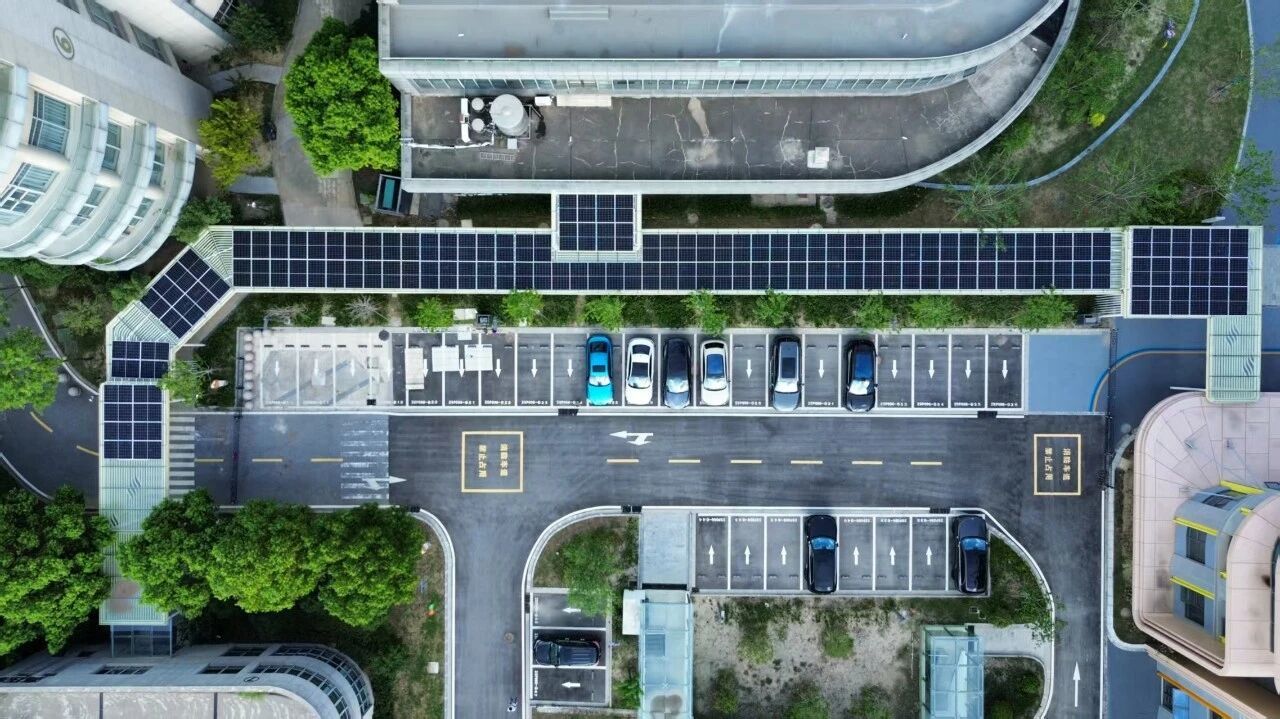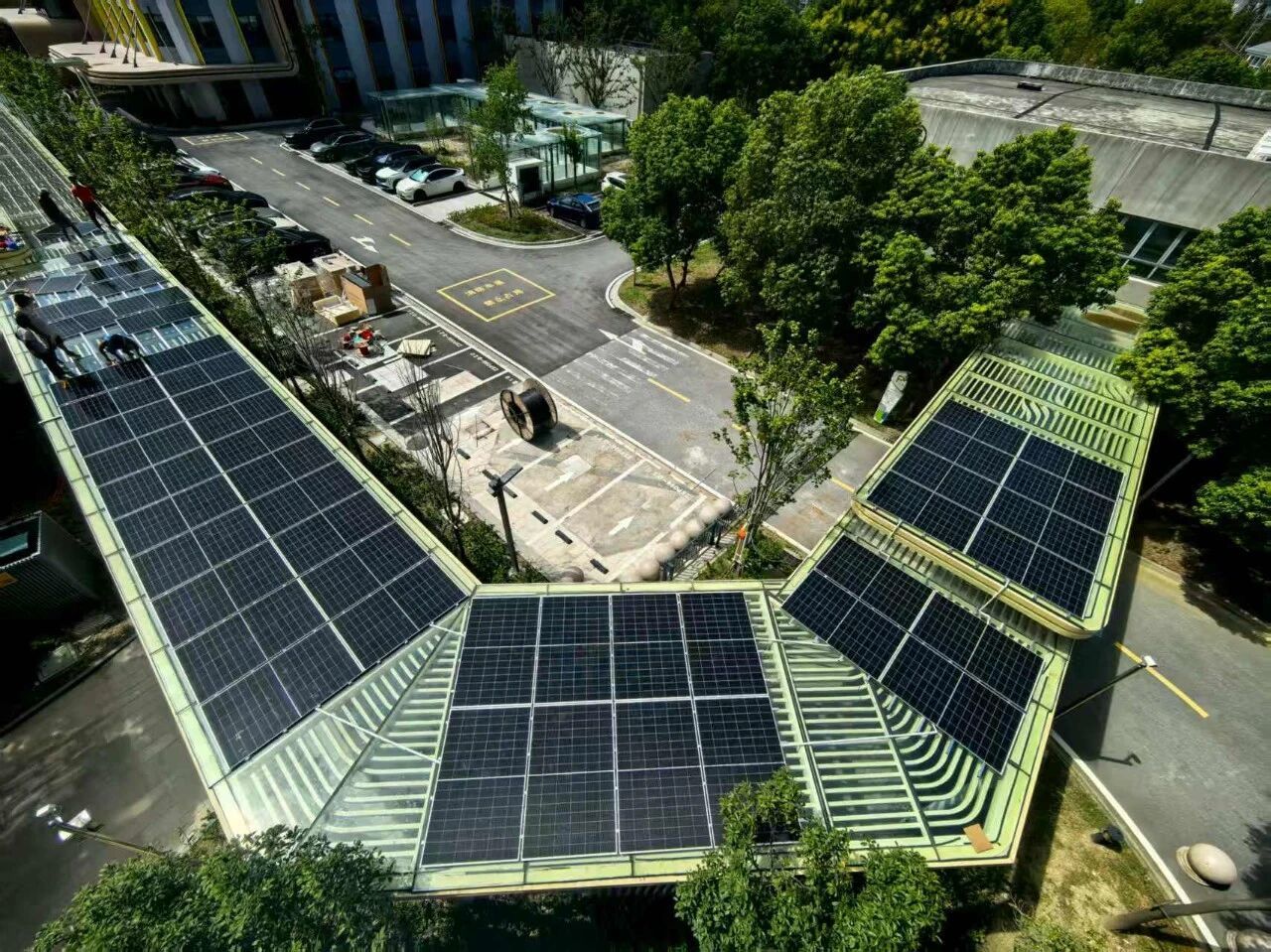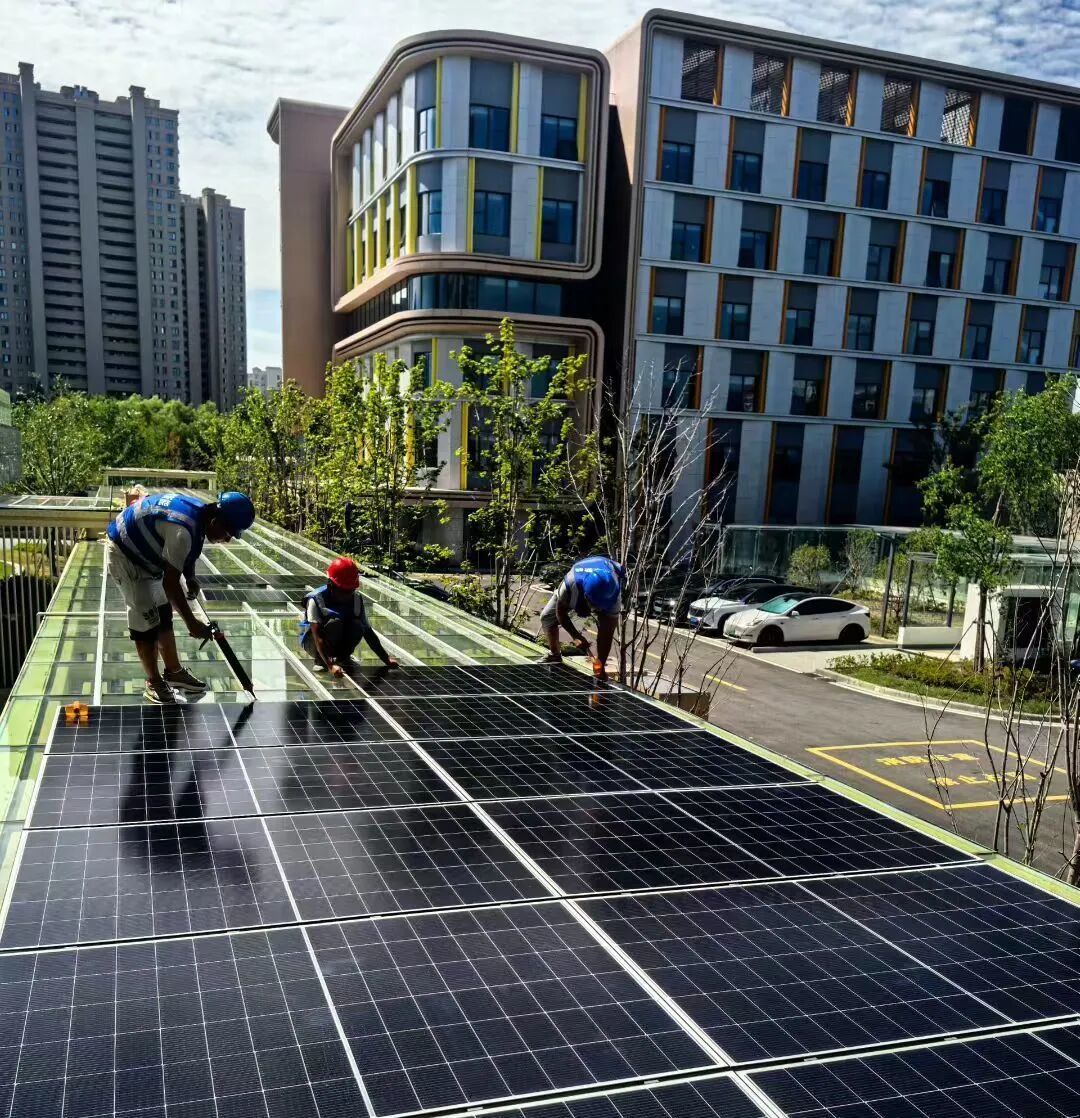When the hospital's glass corridor meets cutting-edge photovoltaic technology
Release time:
Oct 17,2025
In Kunshan, Suzhou, the glass corridor of a public hospital has quietly undergone a "revitalization"—it’s no longer just a passageway connecting buildings, but has instead become the hospital’s very own "green power station." Zhongnengchuang’s tailor-made lightweight steel photovoltaic solution leverages technological innovation to unlock "unconventional" applications of PV technology in public medical facilities, giving concrete form to the concept of "green healthcare."

When it comes to photovoltaics, many people first think of rooftop or ground-mounted power plants. But in hospital settings—where building space is limited and operational needs are unique—conventional PV solutions often prove difficult to implement. Yet, this public hospital’s glass corridor happens to be a perfect example of two “special attributes” coming together.

Public hospitals: A dual consideration of safety and responsibility. As public spaces dedicated to safeguarding people's health, public hospitals have higher requirements for photovoltaic products compared to ordinary buildings—after all, safety is always the top priority.
Safety first: Zhongneng Chuang's lightweight steel components have earned the world's first certification for such products. The core technical team originated from China's national 863 Program, ensuring rigorous quality control throughout the entire process—from R&D to production. With their exceptional performance—offering 3 protections, 2 features that eliminate common issues, and a remarkable 1 efficiency boost—their products perfectly meet the stringent reliability demands of hospitals operating continuously around the clock.
Dual Carbon Responsibility: As a public institution, public hospitals serve as an important platform for advancing the "Dual Carbon" goals. After the glass corridor photovoltaic system is put into operation, it will generate and consume clean electricity on-site, helping to reduce the hospital's energy costs while cutting carbon emissions—and ultimately creating a lower-carbon, healthier environment for patients to receive medical care.

Glass Skybridge: A Lightweight, High-Aesthetic Customization Breakthrough. As a vital link connecting the hospital's public buildings, the glass corridor faces key challenges in structural load-bearing, architectural aesthetics, and ease of installation—issues that Zhongneng Chuang’s lightweight steel components precisely address.
Lightweight design, without weighing down the "building": Compared to traditional photovoltaic modules, the lightweight steel components significantly reduce weight, coming in at just 4–6 kg/㎡. This eliminates the need to modify the existing structure of glass corridors, thereby mitigating building load risks from the outset—and perfectly adapting to these unique architectural scenarios.
Flexible installation, without disturbing the "medical staff": Hospital operations cannot stop—Zhongneng Chuang team optimized the installation process by adopting a combined approach of adhesive and rail systems, ensuring efficient work throughout the entire procedure while minimizing disruptions to patient care and medical staff activities, ultimately achieving "zero impact" during construction.
Aesthetic integration, preserving the "scene" without destruction: The lightweight and slim design of the steel components features a clean, seamless aesthetic that naturally complements the transparent design of the glass corridor, adding a futuristic touch to the structure while seamlessly integrating the "power-generating facilities" into the architecture—transforming them from an "extra burden" into an integral part of the building.
The successful implementation of this project is more than just electricity generation—it’s a "mutual journey" between healthcare and photovoltaics. For hospitals, the PV panels installed on the glass corridors are far more than mere "energy devices." To patients, they provide a stable temperature control system and reliable lighting powered by clean energy, creating a more comfortable medical environment. Meanwhile, from the hospital’s perspective, these installations can significantly reduce long-term electricity costs, freeing up valuable resources to invest in upgrading medical services. And for the PV industry, this project shatters the conventional perception that "PV systems can only be mounted on rooftops—or limited to large-scale ground-based power plants." It provides a replicable model for the application of photovoltaics in "non-traditional scenarios" such as medical buildings, public corridors, and commercial atriums.
As the pioneers of lightweight crystalline silicon photovoltaics, we firmly believe that solar power should benefit more industries and seamlessly integrate into a wider range of applications—transforming the original concept of "+photovoltaics" into "Photovoltaics+." After all, clean energy should be organically woven into every aspect of our daily lives. With the vision of "Wherever sunlight shines, there lies energy," Zhongnengchuang continues to move forward and explore new possibilities! Lightweight PV, powered by Zhongnengchuang!
Previous Page
Recommended News










